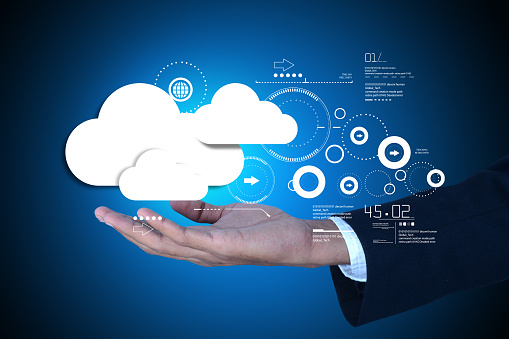We've all heard of the term "Cloud Services" or "Cloud Computing, but what does it refer to? The Internet has for many years been called Cloud, and TCP / IP is a network of protocols used to make the Internet work Data enters the cloud and transfers to another part of the Earth with a unique IP address.
Cloud computing is constantly changing, but it is actually a network infrastructure with servers, platforms, applications and storage. A network of shared resources that can be quickly provided in response to customer demand. If you need computer storage for a day, week or year, there are many providers who will offer that service at a competitive price. Cloud Computing allows us to have On-Demand service from anywhere in the world, as long as we have an internet connection.
There are a few service models emerging, but the basic service models are:
1. IaaS - Infrastructure as a service
2. PaaS - Platform as a service
3. SaaS - Software as a service
SaaS:
Software as a service (SaaS) allows subscribers to use Cloud Provider applications running on their infrastructure from Internet subscriber terminals. It usually requires the use of Thin Client software that works with the local Web Browser system. The subscriber uses the provider's network with all its complexity to perform the required functions.
PaaS:
A platform as a service (PaaS) allows subscribers to use computer or server platforms to host and run their applications. The provider manages the use of infrastructure, platforms and services. The registrar controls the use of their applications and the environment in which they enter.
IaaS:
Infrastructure as a service (IaaS) provides subscribers with infrastructure that will perform their network operations. The subscriber is given control over specific infrastructure such as servers, operating systems, storage devices and a few security devices to name a few.
Extensive use of the cloud is probably the ability to store personal or company information and to be able to access that information.
Although the largest source of this type of computer is in Public Domain, where providers offer these services to the general public, be they individuals or companies, there are other forms of use of Cloud Computing.
So far we have fled the Community Cloud. but other types of network include:
Private Cloud:
This is a network operated on behalf of a company or organization. In some cases it may be managed or operated by a third party, but only for the use of one organization.
Public Cloud:
As the name suggests, network resources are shared by many organizations or businesses with the same purpose. And this type of network can be controlled by the organizations themselves or a third party.
Hybrid Cloud:
This can be a complex network with public, private and public cloud communication systems using common technologies.
There has been, and still is, security concerns about this type of computer. We all know that the Internet can be a dangerous place where there is a lot of risk almost every day.
Companies and private networks are open to attack for all sorts of reasons, leading to malicious harm or compromise of data. A provider in charge of services such as the maintenance of many thousands of organizations or companies is likely to be identified as the most important target for those who may want to violate any security.
Violating the law will give access to too much information so the damage can be very serious. I think the question that should be asked is "do you trust your provider to keep your data safe"?
Conclusion:
There is no doubt about it, Cloud Computing is here to stay and will only continue to grow, but it is up to each organization to weigh and evaluate security risks before acquiring these services.












0 Comments